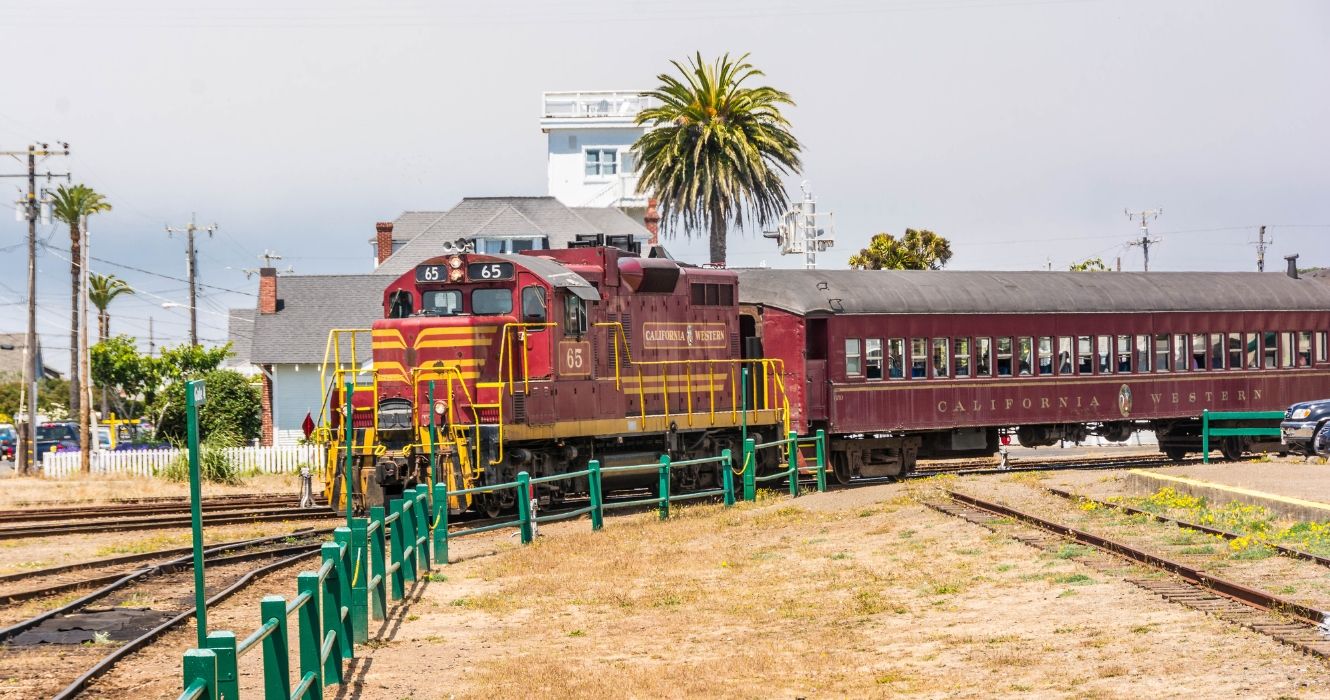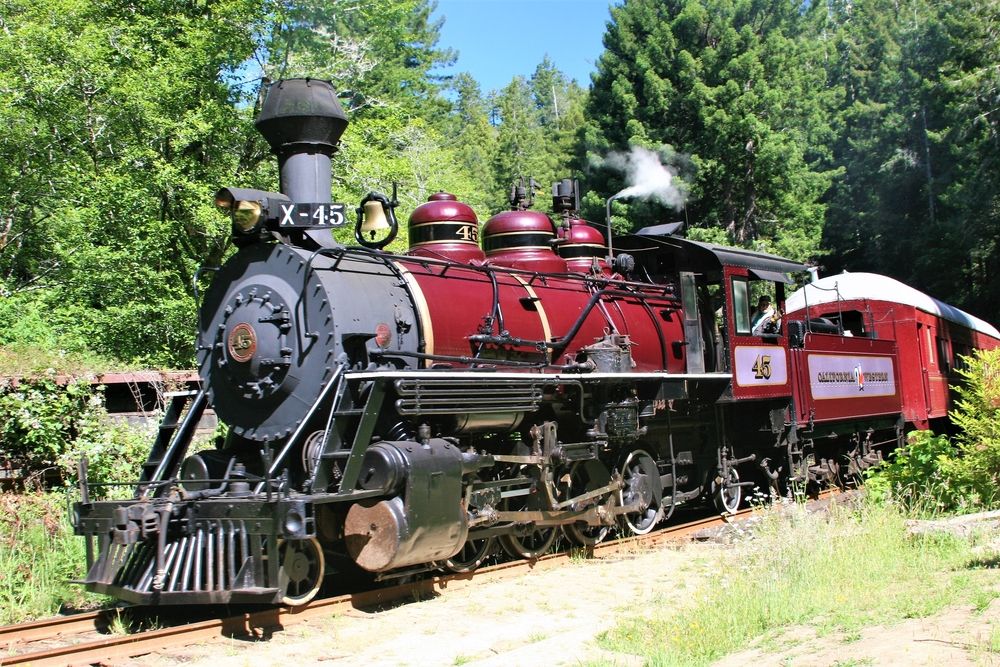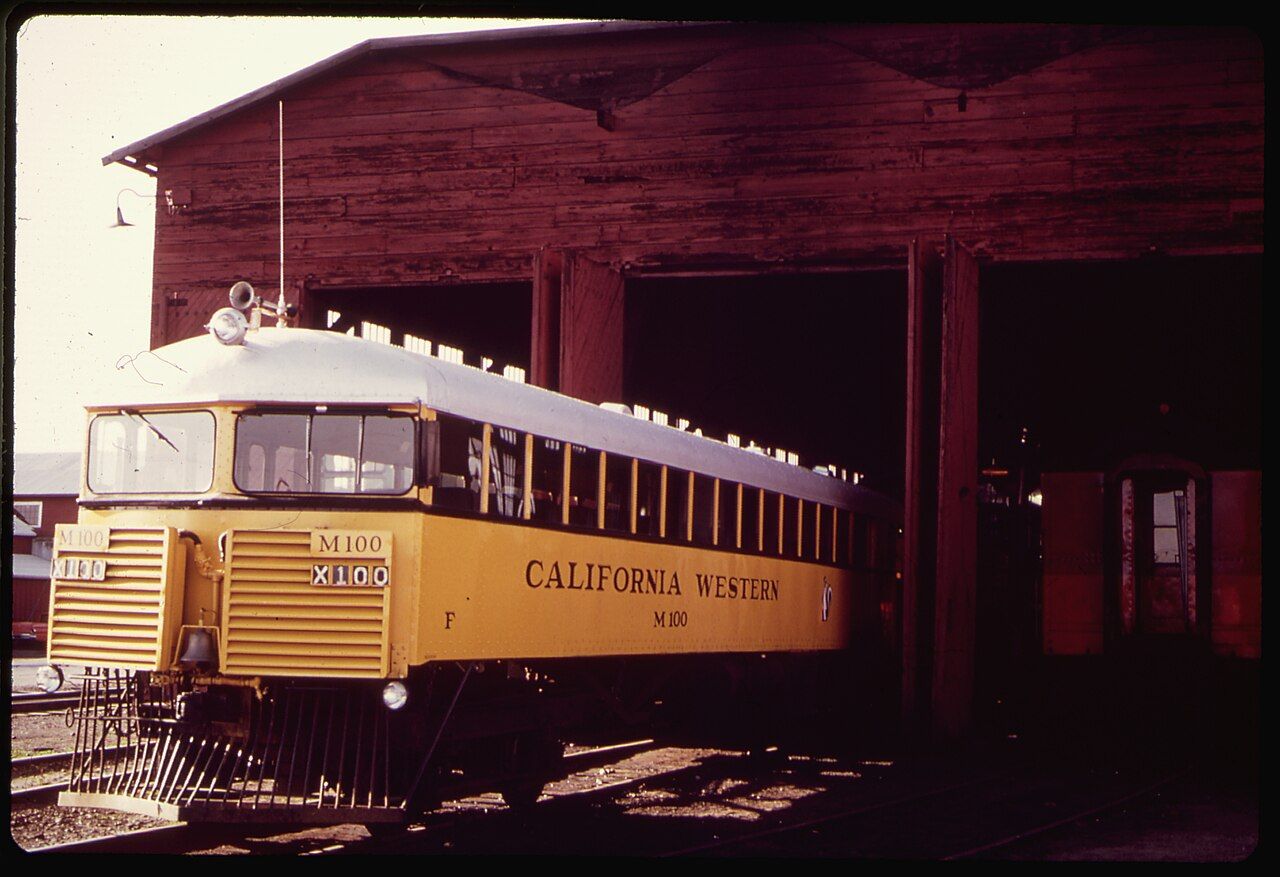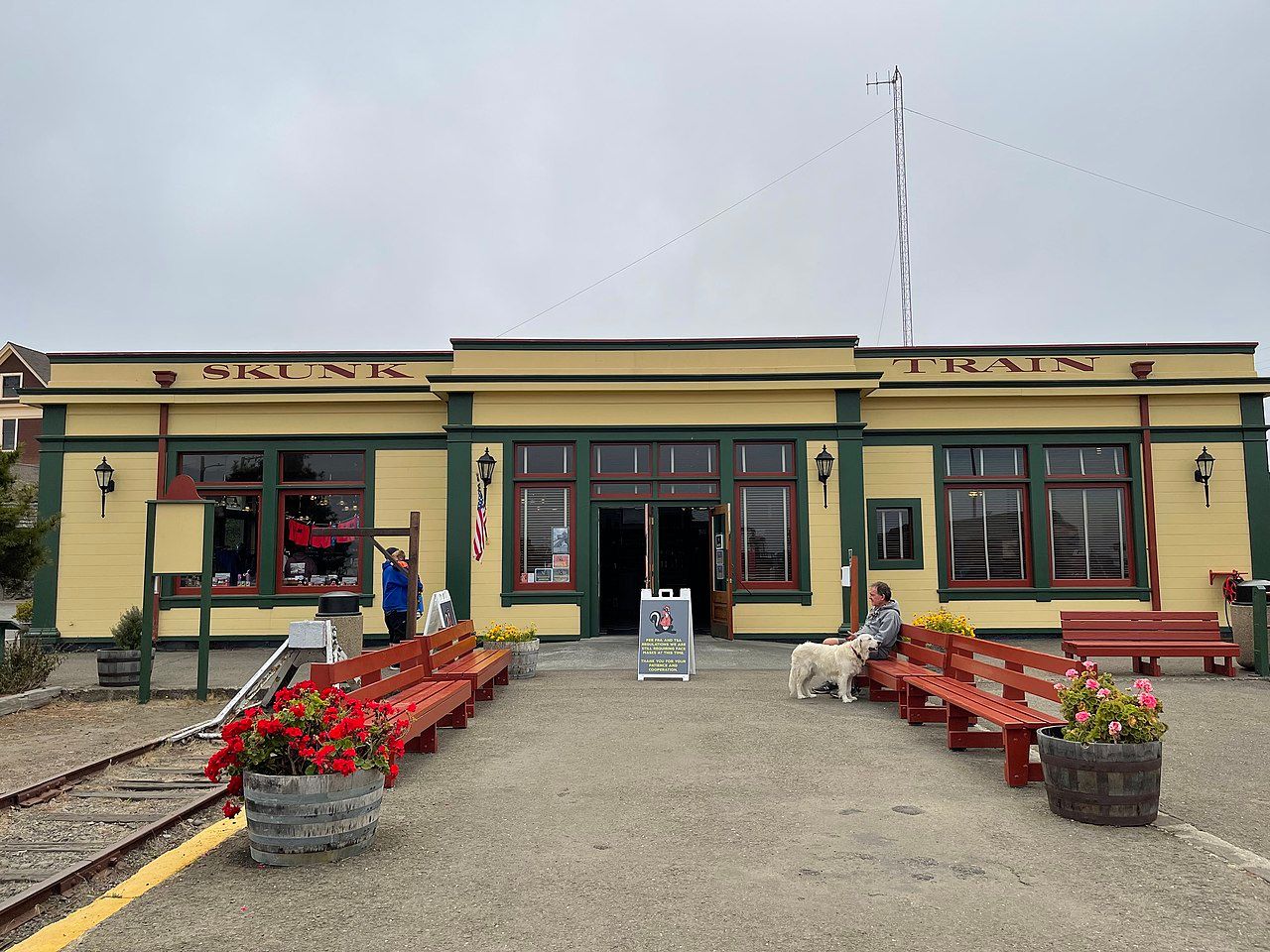Summary
- Take a trip on California's Skunk Train for picturesque ocean views and breathtaking forest excursions, offering a unique experience on the rails.
- The Skunk Train got its name from the smelly motorcars that used to traverse the railroad, which were as stinky as skunks according to the locals.
- The Skunk Train is famous for its history as a lumber transport and offers travelers gorgeous sights, including redwood forests and the Mendocino coast.
California is home to tons of adventures, and many of them take place either along the coast or in the forest. In some cases, attractions do double duty and offer both. California's Skunk Train is one of those adventures! A trip along the Skunk Train, a railroad on the Mendocino coast, promises picturesque ocean views, breathtaking forest excursions, and even seasonal offerings to make holidays a bit brighter.
The Skunk Train in California (trains depart from both Fort Bragg and Willits) is a unique sight to see and an even better experience on the rails. Here's what to know about it, including how the Skunk Train got its name and why it's worth visiting.
How Did The California Skunk Train Get Its Name?
For travelers wondering how the Skunk Train got its name, the answer lies in the railroad's history. Fort Bragg Railroad began in the early 1880s, and the California Western Railroad was the result of its growth.
The railroad was later renamed The Skunk, interestingly enough due to improvements in technology. Motorcars, which were also called railbuses or railcruisers, traversed the railroad and were quite smelly.
The motorcars had gas engines, but that wasn't the only odorous thing on board; the cars also had stoves that burned crude oil for heat. Passengers were comfortable, but the smell was terrible.
According to Skunk Train's website, people who lived along the railroad said the motorcars were as stinky as skunks and could be smelled long before they could be seen. The nickname caught on, and people would refer to those motorcars as Skunks.
Even after the motorcars were phased out, the Skunk Train kept its moniker. Now, the nickname refers to not just the cars or trains, but to the railroad itself, which winds from the coast inland.
- Where does the Skunk Train begin and end? The Skunk Train runs from Fort Bragg, on California's coast, to Willits, which is inland. By car, the trip would take a little under an hour. Train trips average about two hours, but it will depend on what travelers decide to do (and whether they stop along the way).
Fortunately, today, the forest surrounding the Skunk Train is far less stinky, but there's still plenty to see and experience.
Grownups can partake in Skunk Beer while visiting the Skunk Train. There is wine tasting available too.
Why Is The Skunk Train Famous?
Apart from having a unique name, the Skunk Train is famous for the history of the railroad it travels. The railroad was originally used for transporting lumber and was part of the Fort Bragg mill.
The property changed hands over time, but in the late 1990s, local investors purchased the California Western Railroad and turned it into a unique business and recreation spot.
- Mendocino Railway manages the Skunk Train today.
Another reason the Skunk Train is renowned? It offers travelers gorgeous sights. The train meanders through not only the redwood forests but also along the Mendocino coast. Some trips stop for travelers to stretch their legs, and there are trails to explore along the way.
Various trips let visitors enjoy even more; Moonlight Rail Bikes (nighttime star-spotting adventures) and Days of Steam (historical train rides) are just two of the unique offerings on the Skunk Train.
Travelers can even bring their furry friends along; a dog trailer option is available on Pudding Creek Express excursions.
The Skunk Train isn't California's only scenic train ride. Other options include Roaring Camp Railroad, which is another great spot to see redwoods, and various scenic Amtrak routes like the Zephyr and Southwest Chief, plus the Amtrak Pacific Surfliner, which traverses Southern California.
What To See On California's Skunk Train
The Skunk Train travels through the Noyo River Canyon, allowing riders to glimpse views of giant redwoods, historic trestle bridges, and thrilling tunnels. Most trips afford visitors the ability to disembark from the train (or their railbikes) and explore.
In some cases, it's also an option to overstay your train's departure time and catch the next train back a couple of hours later.
- Locations: 100 West Laurel Street Fort Bragg, California 95437 and 299 East Commercial Street Willits, California 95490
- Tickets: Prices vary based on route/offerings; the Wolf Tree Turn starts at $64.95 while the Pudding Creek Express begins at $49.95.
Plan a Skunk Train ride during seasonal specials like the Christmas Tree Train or Pumpkin Express to see even more sights. Or, book a railbike excursion for another unique way to see the sights.
Travelers can catch the Skunk Train from either the Fort Bragg station or the Willits pickup point, but it's worth exploring the greater Fort Bragg area while visiting. In addition to the Skunk Train, Fort Bragg also has the famed Glass Beach (but don't take any glass home!) and other attractions on offer.




